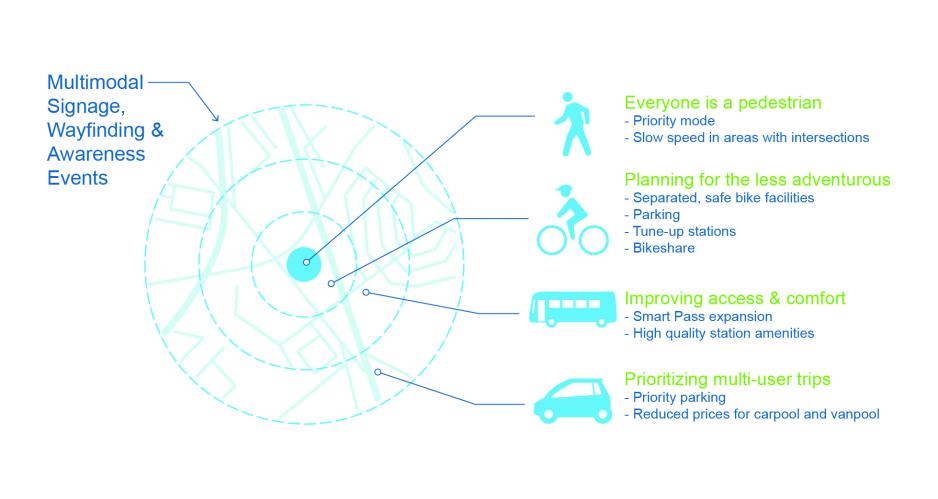Traditional efforts to meet increasing travel demand are typically based on a supply-oriented approach largely supported by the lack of physical and fiscal limitations on where, when, and how additional capacity can be deployed. However, transportation agencies have also promoted strategies to reduce demand and subsequent congestion during peak commuting times through demand-based strategies, including vanpooling, ridesharing, teleworking, and flexible work hours/days. Although these approaches to reducing single-occupant vehicle (SOV) travel are fundamental components of transportation demand management (TDM) today, they are joined by other strategies that provide an expanded choice for all travelers, influencing behavior that uses the existing built environment more efficiently and sustainably.
Twenty-first century transportation systems, particularly those in major urban areas, face significant physical constraints (in terms of what capacity can be expanded or developed and where) and funding constraints (in terms of available revenue to make those improvements). For TDM to be truly effective, it must be supported by land use policies and neighborhood design that reduce the need to drive for daily tasks.
Changing the Cost of Commuting
The relative low cost of driving alone and parking remains the biggest challenge to the implementation of TDM measures.
Helping Communities to Leave Their Cars at Home
Ensure that land use patterns, transportation projects and systems, community partnerships, and tools and resources are all aligned to support transportation demand management (TDM) and reduce single occupant vehicle (SOV) use.
TDM and the Development Process
Transportation demand management (TDM) policies at the state, regional, and municipal level are becoming more prevalent. These policies provide regulations and guidance to formally institute TDM practices in the development review process.
Transportation Management Associations
Implement transportation management associations (TMAs), which are private, non-profit, member-controlled organizations that provide access to, information on, and facilitate commuter transportation services in a given area.
Sustainable Mode Education, Infrastructure, and Accessibility
Expand education, infrastructure, and accessibility to promote walking and bicycling and other active modes of transportation.
Transit and Transit Oriented Development
Expanding public and private transit services and transit-supportive land uses helps to support transportation demand management and reduce single occupant vehicle use, especially during peak travel times.
Legal Considerations
Local governments are including explicit transportation demand management (TDM) requirements in formal planning processes.
Case Studies
- Marin County, California, USA - Marin County’s first/last-mile partnership with Lyft
- Washington State, USA - DOT Moving Washington Program
- Miami, Florida, USA - I-95 Express Lanes
